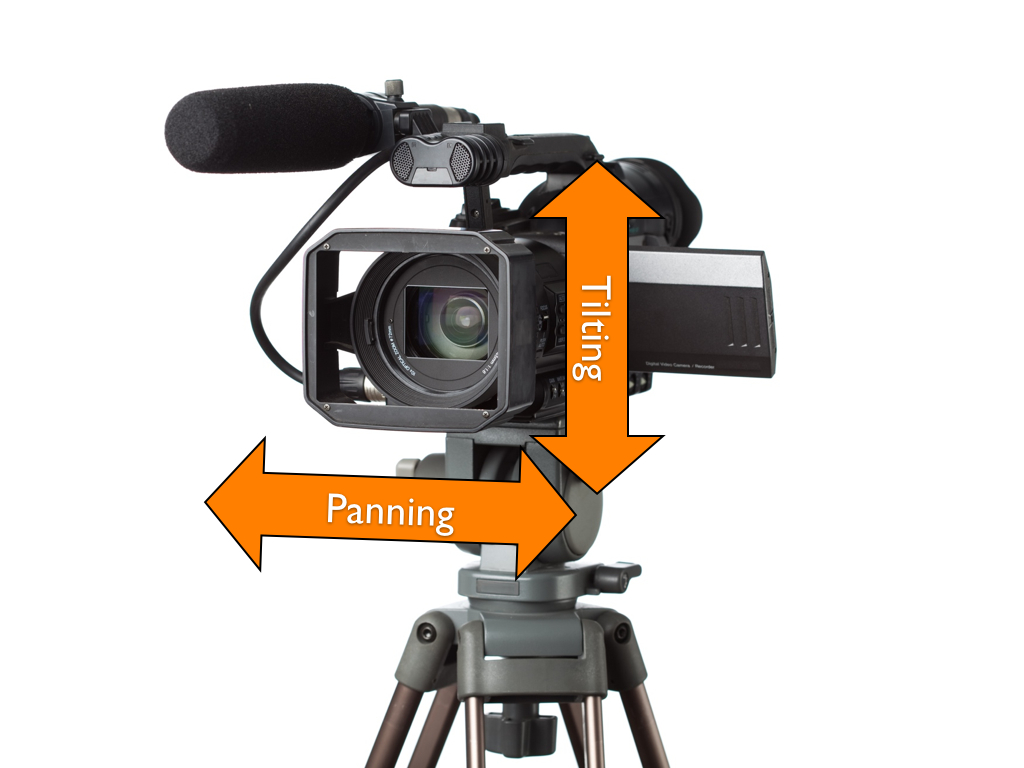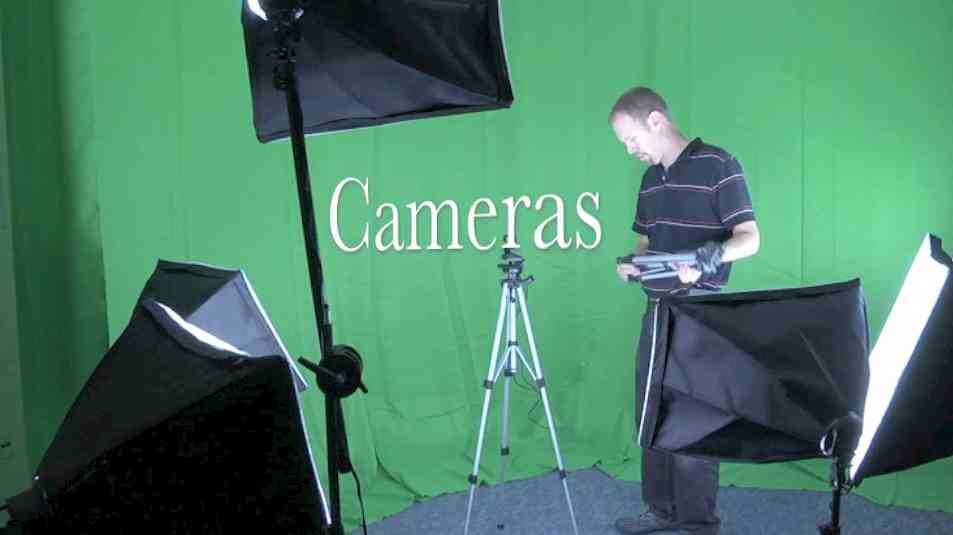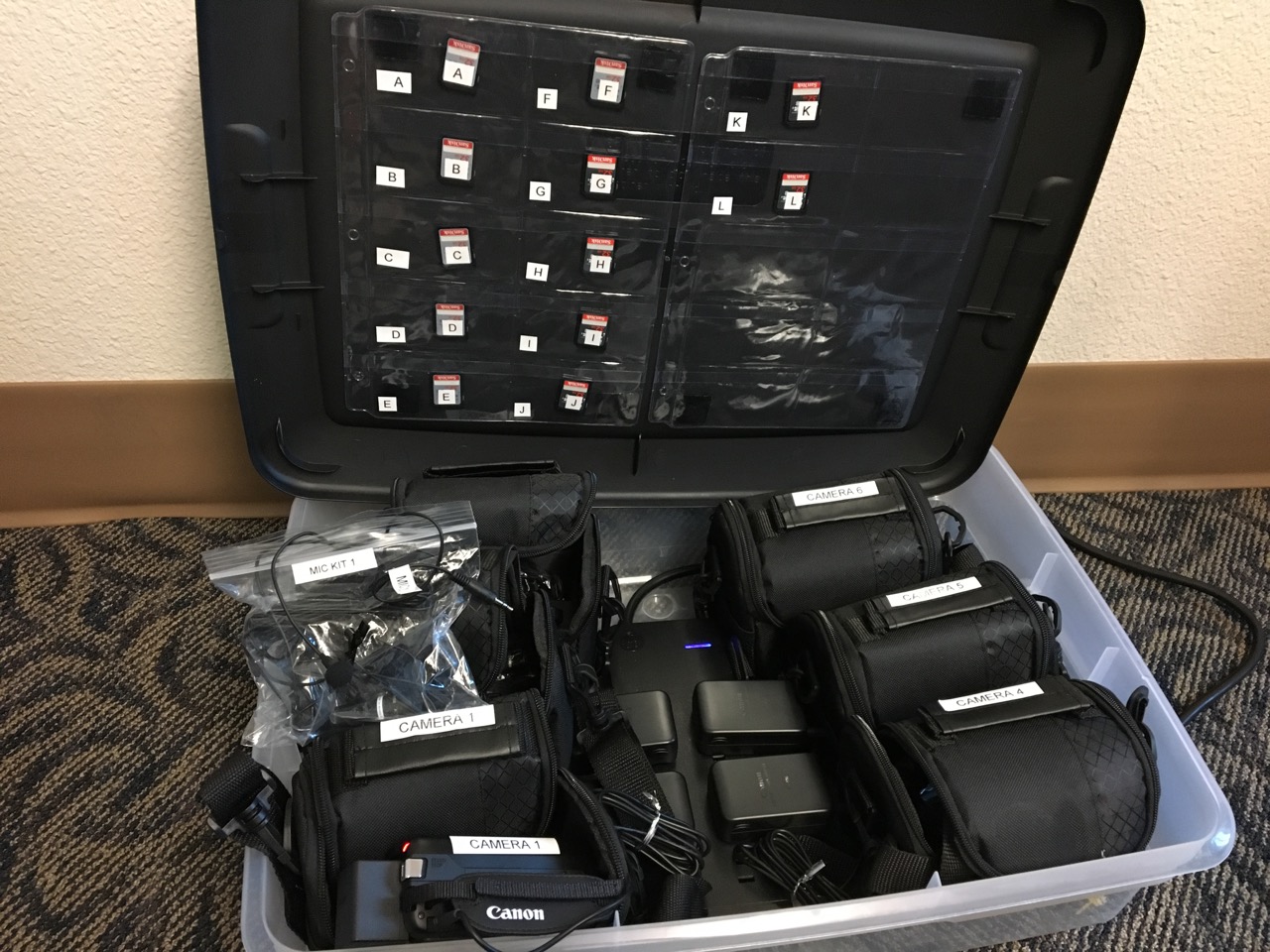In this post I talk about selecting a tripod. You need to consider 3 points: requirements, economics, and quality.
Buying video production equipment is like most other things: you get what you pay for.
The electronics market has driven down the cost of video a great deal in the last 15 years. The quality of video we can capture with a smart phone, a $60 webcam, a $200 point-and-shoot camera, or a $300 camcorder were not possible even with cameras that sold for thousands of dollars 20 years ago. It is important to buy a device that will serve the function(s) that you require for the foreseeable future.
Requirements:
Stationary vs. Moving
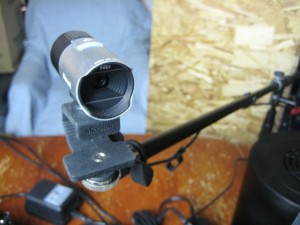
My webcasting cam on a mic stand in my garage office. 🙂
For instance, if you only plan to set up the camera and record yourself at your desk, at a white board, or some other stationary position, a cheap $25 tripod (or mic stand with camera adapter) will do the trick. These tripods are lightweight, and only suitable for the most basic stationary recording situations.
You may want to record yourself speaking at an event or film some action to illustrate a point in a video lesson you are creating. This will likely require that you follow your subject’s movement with the camera. Changing the angle of the camera on a stationary mount is called panning (side-to-side) and tilting (up-and-down). Any kind of panning or tilting with the camera you will want a tripod with fluid drag head or fluid-like head. The price for this kind of tripod is significantly more than $25. More like $200 as an entry point.
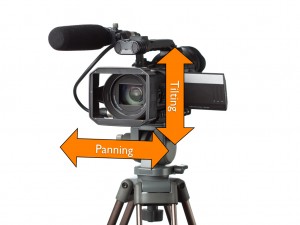
Camera movement terms: Panning = side to side Tilting = up and down
Fluid movement is basically achieved by using higher quality joints, bearings, and lubrication for the moving parts of the tripod head and also adding a buffering effect to movements to make them smooth i.e. fluid. Stability and smoothness is very important for professional-looking video.
Weight of your Gear
My pro camcorders weigh in at five pounds each in their underwear. Add a light, a wireless mic receiver or shotgun mic, an external monitor, a zoom/focus remote… we can start to approach ten pounds. Check the weight rating of the tripod you are thinking of buying and make sure it matches with your gear plans for the near/foreseeable future.
Quality
The low quality materials and workmanship makes cheap tripods prone to breakage. Use them only with lightweight camcorders, point and shoot cameras, or webcams. The low price point makes lightweight tripods a viable starting place for many, but don’t take any unnecessary risks. I bought 3 for my own initial webcasting set-up and still use them when necessary. (I now recommend mic stands with camera adapters for a webcam based studio set-up.)
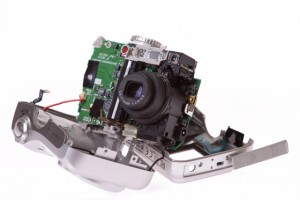 My point is: be careful. Nicer equipment gets expensive and oftentimes heavy. Your tripod should provide a secure mount for your equipment. Perching any device that costs more than you are willing to spend again on one of these cheap tripods is risky.
My point is: be careful. Nicer equipment gets expensive and oftentimes heavy. Your tripod should provide a secure mount for your equipment. Perching any device that costs more than you are willing to spend again on one of these cheap tripods is risky.
In my background as an elementary tech teacher trying to produce videos on a shoestring budget, I’ve tried to use cheap tripods to follow the movements of a presenter. It is “impossible.” The joints/bearings are not smooth, so there will usually be some jitter or vibration as you pan. If you’re using the onboard mic to capture ambient sound, you will likely pick up some squeaking or rubbing sound from the cheap pivots in the tripod head. The hardware and legs of these tripods are usually lightweight aluminum and plastic, so they bend and/or break easily. Plus the lightness of the tripod (though nice for moving the gear) works against you for adding stability to shots.
Economics
Although many cheap tripods will claim to have fluid movement, don’t expect to find this feature reliably in anything less than $200. Manfrotto and Varizoom are a couple of brands that will deliver professional quality with models in this price range. I’ve linked to options to consider on Amazon. You might check Craigslist or eBay listings to see if you can find this kind of professional gear on sale. I have a SLIK 505QF which I received 25 years ago as a Christmas present. (Thanks, Dad!) I also have a heavy duty Bogen Manfrotto 3046 with a 3063 head. These are both on the low end of the tripod prosumer food chain, but they both have nice fluid movement, more than adequate weight rating, and the prices were right. At this point, they match my needs for function, quality, and cost.
In a Nutshell
Your tripod purchase must be driven by the same metrics as any other purchase: requirements, quality, and economics. Try to think ahead to your video needs. If you will be recording moving subjects, get a a tripod with fluid drag head. If you will be using heavier, more expensive video gear, definitely invest in a heavier-duty tripod rated to hold more weight. Finally, find the tripod that matches your needs and budget.
Your pain points?
Are you getting started using video in your business? Do you have a question about tripods or mounting your camera equipment? Maybe a suggestion about tripod use that will benefit others? Please leave your questions or comments below. I read every response and would appreciate the chance to dialog with you.
Subscribe
If this has been helpful, consider subscribing here for more information on using video to grow your web presence.
